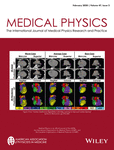
MEDICAL PHYSICS
Scope & Guideline
Pioneering Research at the Intersection of Technology and Healthcare
Introduction
Aims and Scopes
- Radiotherapy Techniques and Innovations:
The journal focuses on the development and evaluation of new radiotherapy techniques, including intensity-modulated radiation therapy (IMRT), volumetric-modulated arc therapy (VMAT), proton therapy, and stereotactic radiosurgery (SRS). Studies often involve optimization strategies to improve dosimetric outcomes. - Imaging and Image Processing:
Research related to medical imaging technologies such as MRI, CT, and PET is a core area of focus. This includes advancements in image reconstruction algorithms, motion correction techniques, and the integration of artificial intelligence for automated image analysis. - Quality Assurance and Safety in Radiotherapy:
Quality assurance (QA) methodologies, safety protocols, and risk management strategies for radiotherapy practices are emphasized, ensuring patient safety and treatment efficacy. - Machine Learning and Artificial Intelligence Applications:
The journal showcases the application of machine learning and AI in medical physics, particularly in areas of treatment planning, image segmentation, and predictive modeling for patient outcomes. - Clinical Implementation and Evaluation:
Research that evaluates the clinical implementation of new technologies, treatment approaches, and protocols is prevalent, highlighting the practical implications of advancements in medical physics. - Radiobiology and Dosimetry:
Studies exploring the radiobiological effects of different treatment modalities and the dosimetric characteristics of new radiotherapy techniques are integral to the journal's focus. - Patient-Specific Treatment Planning:
The journal emphasizes patient-specific approaches in treatment planning, including adaptive radiotherapy and individualized dose calculations based on patient anatomy and tumor characteristics.
Trending and Emerging
- Artificial Intelligence and Machine Learning:
There is an increasing trend towards integrating AI and machine learning in radiotherapy, including automated treatment planning, image segmentation, and predictive analytics for patient outcomes. - Adaptive Radiotherapy:
Adaptive radiotherapy techniques, which allow for real-time adjustments to treatment plans based on patient-specific factors, are becoming more prevalent, reflecting advancements in imaging and treatment delivery technologies. - Hybrid Imaging Techniques:
Research focusing on hybrid imaging modalities, such as combining PET with MRI or CT, is on the rise, emphasizing the importance of multimodal approaches for accurate diagnosis and treatment planning. - Personalized Medicine in Radiation Therapy:
The shift towards personalized medicine is evident, with an increasing number of studies focusing on tailoring treatment plans to individual patient characteristics and tumor biology. - Remote and Automated Quality Assurance:
The trend towards automation in quality assurance processes is emerging, particularly in the context of remote monitoring and real-time QA systems to enhance efficiency and accuracy. - Integration of Imaging and Treatment Planning:
The convergence of imaging technologies and treatment planning systems to facilitate more accurate and efficient radiation therapy is gaining traction, with an emphasis on workflow optimization. - Radiomics and Big Data Analytics:
The application of radiomics and big data analytics to extract meaningful information from imaging data is an emerging field, providing insights for better treatment predictions and patient management.
Declining or Waning
- Traditional Dosimetry Techniques:
Research focusing solely on traditional dosimetry methods, such as ionization chambers and film dosimetry, has seen a decline as more advanced techniques like electronic portal imaging and machine learning-based dosimetry gain traction. - Basic Radiobiology Studies:
The journal has shifted away from purely basic radiobiology studies in favor of applied research that directly impacts clinical practice and treatment outcomes. - Stand-Alone Quality Control Methods:
There is a waning emphasis on stand-alone QA methods without integration into broader quality management systems, as the field moves towards more comprehensive, system-based approaches. - In vitro Studies:
The quantity of in vitro studies has decreased as there is a growing preference for in vivo studies that provide more clinically relevant data. - Historical Reviews and Non-Empirical Research:
The publication of historical reviews and purely theoretical papers has diminished, with a stronger focus now on empirical research and innovative methodologies.
Similar Journals
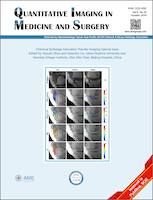
Quantitative Imaging in Medicine and Surgery
Unlocking the Future of Imaging in Medicine and SurgeryQuantitative Imaging in Medicine and Surgery is an esteemed journal dedicated to advancing the field of medical imaging through rigorous research and innovative methodologies. Published by AME PUBLISHING COMPANY in China, this journal has established itself with an impressive Q2 quartile ranking in the field of Radiology, Nuclear Medicine, and Imaging, reflecting its dedication to high-quality research. With a comprehensive focus on quantitative imaging techniques, the journal covers a wide range of topics including image analysis, imaging biomarkers, and the integration of imaging in clinical practice, promoting collaboration between imaging specialists and clinicians. As an open access journal, Quantitative Imaging in Medicine and Surgery ensures that its articles are freely accessible, facilitating the dissemination of knowledge to a broader audience. With a commitment to fostering innovation in imaging science, this journal serves as an invaluable resource for researchers, professionals, and students alike, ultimately aiming to improve patient outcomes through advanced imaging strategies and technologies.

EUROPEAN JOURNAL OF RADIOLOGY
Elevating Standards in Radiology and ImagingThe European Journal of Radiology, published by Elsevier Ireland Ltd, is a premier peer-reviewed journal in the fields of radiology, nuclear medicine, and imaging. Established in 1981, it has carved a significant niche within the academic community, showcasing innovative research that enhances medical imaging practices and improves patient care. With an impressive ranking in the Q1 category for both Medicine (miscellaneous) and Radiology, Nuclear Medicine, and Imaging in 2023, the journal is recognized globally for its commitment to advancing scientific knowledge and improving imaging methodologies. The journal's Scopus ranking of #60/333, placing it in the 82nd percentile, underlines its reputation for high-quality research and scholarly contributions. While traditionally a subscription-based journal, it continually evolves to meet the demands of the academic landscape, aiming to bridge the gap between research and clinical practice. Researchers, healthcare professionals, and students alike can benefit from exploring its extensive archives and current publications, which are curated to foster education and innovation in the medical imaging domain.
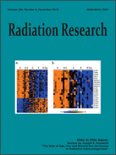
RADIATION RESEARCH
Unraveling the mysteries of radiation for a healthier tomorrow.RADIATION RESEARCH is a prestigious journal published by the RADIATION RESEARCH SOC that serves as a vital resource for professionals and researchers in the fields of biophysics, radiation science, and radiology. Established in 1954, this journal has consistently advanced the study of radiation's effects on health and the environment, bridging fundamental and applied research. It boasts an impressive impact factor reflected in its quartile rankings, including Q2 in Biophysics and Q1 in Radiation, making it a highly regarded publication within its discipline. Researchers will find valuable insights through rigorous peer-reviewed articles that explore innovative methodologies and findings related to radiation exposure, imaging technologies, and the biological consequences of radiation. Although the journal does not currently offer open access, it remains a vital reference for academia and industry, fostering a deeper understanding of radiation sciences and their implications for future research and public health.

Physical and Engineering Sciences in Medicine
Advancing Biomedical Innovation through Engineering ExcellencePhysical and Engineering Sciences in Medicine is an esteemed peer-reviewed journal published by SPRINGER, dedicated to advancing the interdisciplinary fields of biomedical engineering and biophysics. With an ISSN of 2662-4729 and an E-ISSN of 2662-4737, this journal has carved a niche for itself since its inception in 2020. Situated in the Netherlands, it serves as a global platform for innovative research and developments that bridge the physical sciences and engineering with medical applications. The journal boasts a commendable range of quartile categorizations, highlighting its impact in various sectors including Instrumentation (Q1), Radiology (Q2), and Biotechnology (Q2). Its Scopus rankings further emphasize its relevance and quality, placing it in the top 15% in several categories. Being an Open Access title, it promotes the dissemination of knowledge, ensuring that vital research is accessible to all, thereby fostering collaboration among researchers, professionals, and students alike. The journal's objectives include promoting cutting-edge research, enhancing biomedical technology, and addressing complex health challenges through innovative engineering solutions, establishing it as a vital resource in the scientific community.
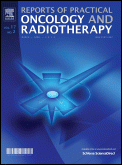
Reports of Practical Oncology and Radiotherapy
Connecting clinicians and researchers for impactful findings.Reports of Practical Oncology and Radiotherapy is a distinguished open-access journal dedicated to advancing the fields of oncology, radiotherapy, and cancer research. Published by VIA MEDICA since 2001, this journal serves as a critical platform for disseminating innovative research and practical findings that impact clinical practices and patient outcomes. With an emphasis on fostering collaboration and knowledge exchange among researchers, clinicians, and students, the journal has positioned itself within the Q3 and Q4 categories of renowned directories in oncology, radiology, and nuclear medicine as of 2023. Based in Gdansk, Poland, it provides unrestricted access to its articles, ensuring that crucial research reaches a wide audience. This dedication to open access reflects the journal's commitment to transparency and innovation in the fight against cancer, making it an invaluable resource in this vital field of study.
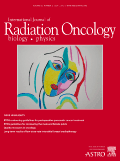
INTERNATIONAL JOURNAL OF RADIATION ONCOLOGY BIOLOGY PHYSICS
Innovating Insights in Radiation Physics and Oncology.International Journal of Radiation Oncology Biology Physics, published by Elsevier Science Inc, is a premier academic journal that has played a critical role in advancing the field of radiation oncology since its inception in 1975. With an impressive impact factor and recognition as a Q1 journal across multiple categories such as Cancer Research, Oncology, and Radiology, this journal serves as a vital resource for researchers, clinicians, and students dedicated to understanding and improving cancer treatment modalities. Its multifaceted scope encompasses original research, reviews, and innovative clinical studies, fostering a deeper understanding of the interplay between radiation, biology, and oncology. With a remarkable ranking in Scopus, including a top position in Radiation Physics and an elite percentile in Oncology, IJROBP remains at the forefront of scientific discovery and innovation in the management of cancer. A traditional subscription model ensures high-quality, peer-reviewed content, providing invaluable insights that continue to advance the standards of care and research in radiation oncology.

Physics & Imaging in Radiation Oncology
Advancing the Future of Radiation Oncology Through Imaging InnovationPhysics & Imaging in Radiation Oncology is a premier journal dedicated to advancing the interdisciplinary field of radiation oncology through innovative research and imaging technologies. Published by Elsevier, this open-access journal has made its mark since its inception in 2017, ensuring that groundbreaking findings are accessible to a broad audience. With a strong focus on the integration of physics, imaging techniques, and oncology, the journal occupies esteemed positions in the academic landscape, ranking in the top quartile for Radiation and Radiology, Nuclear Medicine and Imaging as of 2023. The journal serves as a platform for researchers, professionals, and students to share insights and foster collaboration, ultimately improving patient outcomes through enhanced imaging and treatment modalities. Based in Ireland and operating from Radarweg 29, 1043 NX Amsterdam, Netherlands, the journal aims to bridge the gap between theoretical physics and practical applications in clinical settings.

STRAHLENTHERAPIE UND ONKOLOGIE
Exploring the forefront of oncology and radiological science.STRAHLENTHERAPIE UND ONKOLOGIE is an esteemed journal published by Springer Heidelberg, focusing on critical advancements and research in the fields of Oncology and Radiology. Established in 1986, this journal has carved its niche within the scientific community, ranking in the Q1 category for Radiology, Nuclear Medicine and Imaging, and Q2 for Oncology as of 2023. With an ISSN of 0179-7158 and E-ISSN 1439-099X, it serves as an essential resource for researchers, professionals, and students dedicated to the complexities of cancer treatment and radiation therapy. While the journal operates under a subscription model, its broad international readership values its rigorous peer-review process and comprehensive coverage of pivotal studies. STRAHLENTHERAPIE UND ONKOLOGIE continues to enhance its impact in the domains of oncology and radiology, as evidenced by its commendable Scopus rankings, including a 76th percentile in Radiology and a 65th percentile in Oncology. Its commitment to disseminating innovative research solidifies its role as a cornerstone in the ongoing quest to improve patient care and therapeutic techniques.

Journal of Medical Imaging
Transforming Healthcare Through Cutting-Edge Imaging ResearchThe Journal of Medical Imaging, published by SPIE-SOC PHOTO-OPTICAL INSTRUMENTATION ENGINEERS, is an esteemed publication in the field of medical imaging, playing a pivotal role in advancing the discipline since its inception in 2014. With an ISSN of 2329-4302 and an E-ISSN of 2329-4310, this journal has garnered significant recognition, evidenced by its Q2 ranking in 2023 within the critical category of Radiology, Nuclear Medicine, and Imaging. The journal is dedicated to presenting cutting-edge research and innovations that enhance diagnostic imaging techniques and methodologies, appealing to a diverse audience of researchers, professionals, and students alike. Offering valuable insights into the interplay of optics and imaging technologies, it serves as a crucial resource for fostering knowledge and collaboration in the medical community. Notably, it holds a competitive rank of #136 out of 333 in its Scopus category, placing it in the 59th percentile—a testament to its influence and relevance in ongoing medical research. Therefore, the Journal of Medical Imaging stands out as an essential platform for disseminating transformative findings and innovations in healthcare imaging.
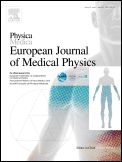
Physica Medica-European Journal of Medical Physics
Innovating Research in Biophysics and ImagingPhysica Medica - European Journal of Medical Physics is a premier peer-reviewed journal published by ELSEVIER SCI LTD, dedicated to advancing the field of medical physics. Established in 1989 and serving as a critical platform for innovative research, this journal covers a broad spectrum of topics within biophysics, radiology, and imaging sciences, consistently ranked in the Q1 category across these disciplines. With an impressive impact factor that highlights its influence within the scientific community—ranking 52/333 in Radiology, 42/243 in Physics and Astronomy, and 35/152 in Biochemistry—the journal is a valuable resource for professionals, researchers, and students aiming to contribute to the technological and methodological advancements in medical physics. Physica Medica is committed to fostering open dialogue and collaboration within the global medical physics community, although it currently does not offer open access options. The journal's extensive citation history and ongoing relevance underscore its importance in the continuous evolution of medical science.